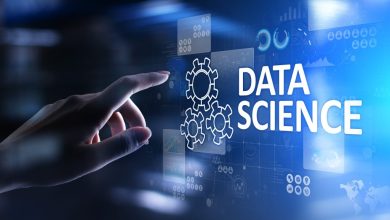
AI agents are everywhere. Product teams, marketing, customer service. Yet most teams still treat them as mysterious black boxes. Plug them in, hope for results, and move on.
That’s a missed opportunity. A better approach is to treat AI agents like new hires. Give them onboarding, role clarity, performance expectations, and human collaboration.
This mindset shift can help create functional teams where people and machines work together, rather than in parallel.
AI needs direction just like any team member
Today’s AI tools are incredibly capable. But we’re not at AGI yet. There is still a critical need for human oversight and direction. Without structure, AI agents often underperform or create inefficiencies, much like a new hire who hasn’t been properly onboarded.
To be effective, AI agents need a clearly defined role. Agents built for a specific purpose work much better than general purpose agents, both in terms of functionality and user experience. When you design an agent to tackle a specific use case, you can optimise the interface for the specific problem, making it much easier to interact with. Same goes for the functionality under the hood. You can architect a precise problem set for the AI and craft targeted evaluations to make sure the agent excels at its intended tasks.
This goes beyond product design and AI architecture. Just like a human employee, agents also need clear context and guidance. The prompt you write to the agent and the data you share with it via Model Context Protocol’s (MCPs) largely determines their ability to successfully perform the task. If you give the agent a vague task, chances are it will hallucinate. Garbage in, garbage out. Once you get bad AI output, teams lose trust, start ignoring AI contributions, and duplicate efforts.
By onboarding AI agents as digital colleagues rather than detached tools, teams can build the foundation for trust, productivity, and real impact.
Rethink collaboration – It’s not human vs machine
It’s tempting to view AI as a replacement for human work. But in practice, the most effective use cases come from partnership, not substitution. The rise of AI agents – autonomous tools that act on data, make recommendations, or trigger workflows – marks a shift in how we think about collaboration. These agents aren’t there to take over jobs. They handle the tasks that slow people down, and in the best cases, they supercharge the team by doing work that wasn’t humanly possible.
For example, imagine asking a user researcher to read 5,000 support tickets and call transcripts, identify every relevant feature request, and cluster similar ones. No human can keep that many details in mind at once. At best, a researcher could create fuzzy themes and tags – but it would take thousands of hours, yield less precision, and never happen daily. As a result, valuable customer feedback is often ignored. An AI agent, on the other hand, can complete this in minutes, every day, and deliver actionable insights before the product team even starts work.
This shift helps teams act on fresher data while freeing employees from repetitive, time-consuming tasks. By offloading the work that drains time but adds limited strategic value, teams elevate human contributions to higher-order skills: judgment, creativity, and problem-solving.
The division of labor mirrors how high-performing teams already operate: each contributor – human or AI – adds value in their own way. When implemented thoughtfully, agents become part of the team’s rhythm, offering speed, consistency, and insight at scale.
Research from McKinsey’s 2025 State of AI report backs this up, showing that redesigning workflows to embed AI across functions – not isolating it in technical silos – is the single strongest driver of bottom-line impact. The takeaway: the future of work isn’t about humans vs. AI, but humans with AI.
Teach your teams to work with agents
Deploying an AI agent is only part of the challenge. Without guidance, human teams may not understand how or when to use the tool, or may use it in a way that results in poor work product.
This is where training comes into play. Just as organisations introduce new hires with an onboarding process, they should introduce AI agents with clear documentation, opportunities to learn through hands-on interaction, and environments where experimentation is encouraged. Workshops and informal team huddles can go a long way in building familiarity and reducing hesitation.
When teams understand what an agent can do, and what it can’t, they’re more likely to integrate it meaningfully into their work. A culture of open feedback also helps. Encouraging people to ask for help and give each other feedback on how to best prompt agents can help with effective adoption.
Build accountability into your AI systems
Any successful team needs accountability, and AI enhanced teams are no different. Without someone responsible for the agent’s performance and output, it’s easy for errors to go unnoticed or for adoption to stagnate.
Forward thinking companies are addressing this by assigning ownership of AI agents to specific individuals or teams. These “agent owners” don’t necessarily need technical expertise, but they do need to monitor how the agent functions within the broader team context. They are responsible for ensuring the agent is being used appropriately, that it’s contributing to productivity, and that it evolves as the team’s needs change.
Creating a feedback mechanism is also crucial. Employees need a channel to raise issues, suggest improvements, or flag when the agent’s actions don’t align with expectations. This ongoing dialogue ensures that the AI system is not static but continues to improve over time.
Rethinking “adoption” as integration
Many companies chase AI adoption metrics as a measure of success. But the number of users interacting with an agent tells only part of the story. True value comes from how well the AI is integrated into day to day work.
An agent that is embedded within workflows, used regularly in team decision making, and trusted as a reliable source of support is far more valuable than one that’s used inconsistently or only by a few power users. Integration, rather than mere adoption, should be the goal.
This deeper form of usage reflects not just the presence of AI, but its alignment with business goals, user needs, and cultural fit.
Humans still matter most
The immediate future of work won’t be dominated by machines, but shaped by how effectively we collaborate with them. The businesses that thrive will be those that build resilient, human centric teams that see AI not as a threat, but as a trusted partner in getting better work done.




